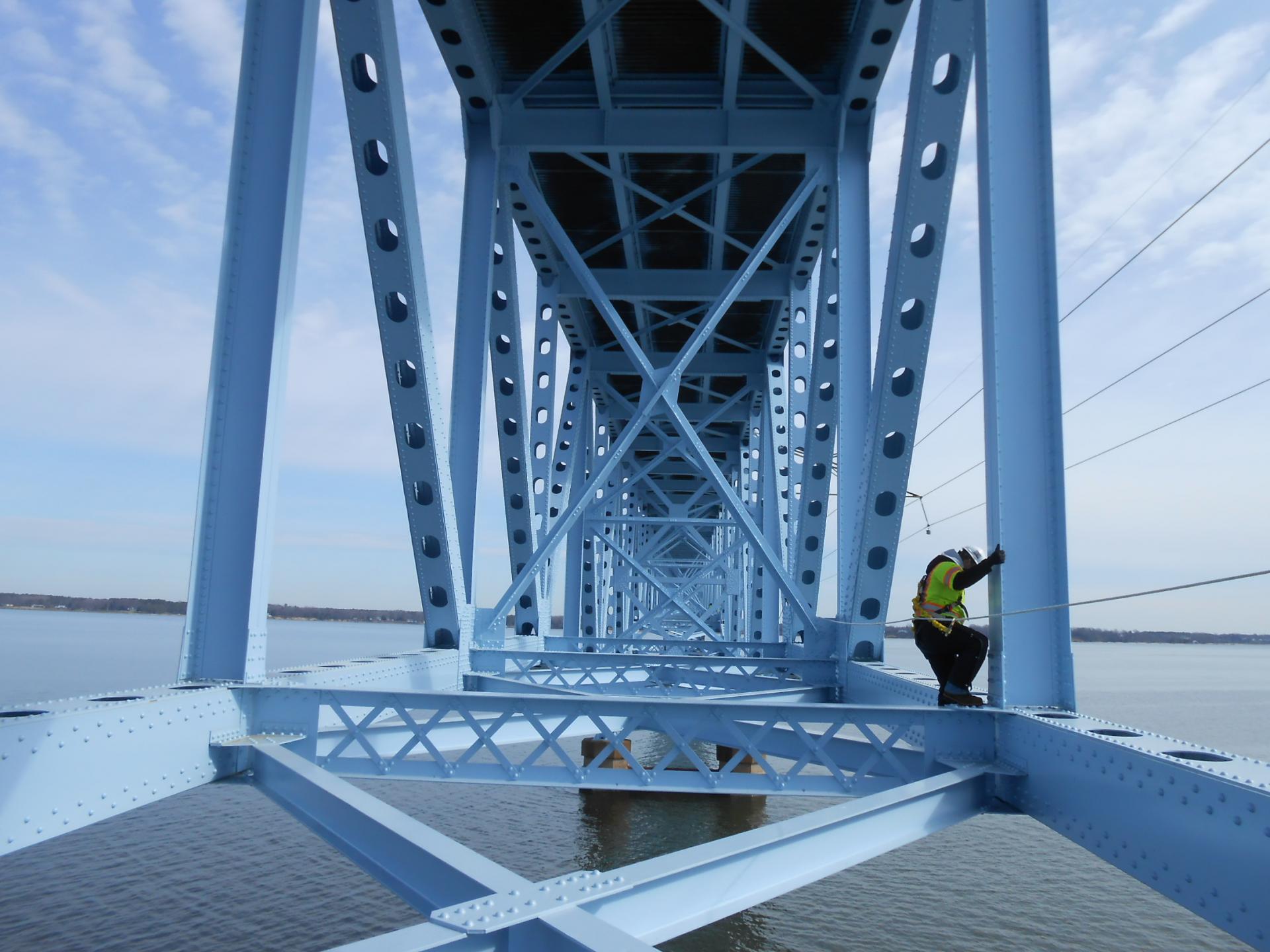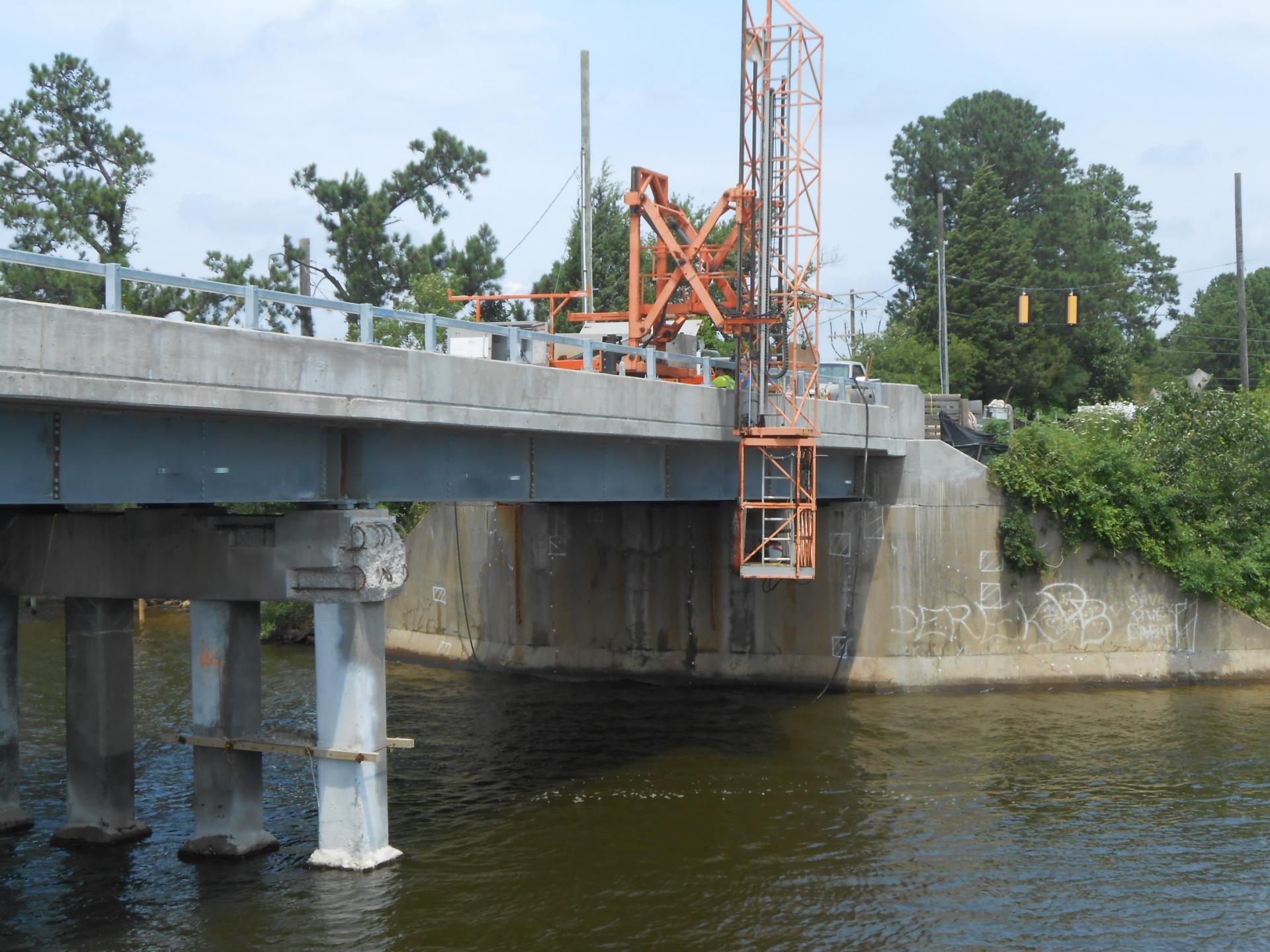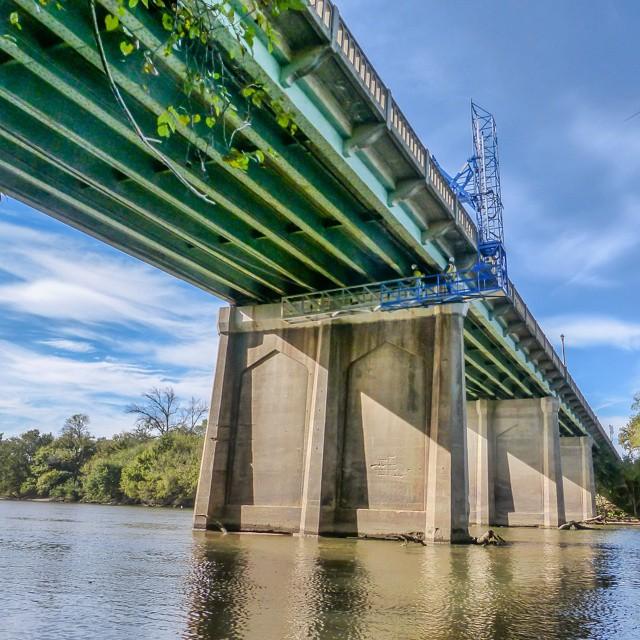vdot safety inspection of highway culverts, bridges, & ancillary structures & related programmatic services
statewide, va
AIE is performing safety inspections of highway culverts, bridges, ancillary structures, and related programmatic services, Statewide. AIE is on our 2nd consecutive statewide safety inspection contract, and to date, AIE has inspected 1,355 bridges, and 945 ancillary structures and performed 320 load ratings under this contract. Inspections include hands-on access to fatigue-prone details and fracture-critical members and utilization of non-destructive testing methods such as dye penetrant for observed and suspected cracks in steel and ultrasonic testing of welds and hanger pins when doubtful conditions are identified, or visual inspection is impossible
We have inspected all types of structures under this contract from simple steel beam timber deck bridges and concrete slabs to more complex structures such as curved girder bridges, trusses, movable bridges, and concrete tied arch bridges. AIE has utilized various types of access equipment including, 62 ft. UBIT snoopers, Moog 90 platform snoopers, rigging, and bucket trucks. In order to ensure a safe work zone, flagging operators and single and multi-lane closures were established in accordance with the Virginia Work Area Protection Manual. As an example, we recently completed the inspection of the Benjamin Harrison Memorial Bridge, which carries Route 156 over the James River between Prince George and Charles City counties. The bridge is a 66-span vertical lift structure totaling 4,463 ft. in length. The inspection was performed with two snoopers, a bucket truck, and rigging used concurrently to minimize traffic control costs and public inconvenience created by the flagging operation. The lift towers were inspected using a bosun chair to access all the panel points.
Many of the structures are over Norfolk Southern or CSX Railroads, and we are very familiar with the right of the entry permit process and have completed the federally required railroad safety training for each respective railroad. Additionally, on multiple occasions, we have been asked to perform inventory/acceptance inspections for recently replaced structures or emergency inspections due to flooding events and were able to schedule and mobilize inspection teams (with MOT and access equipment when required) on short notice without impacting our regularly scheduled inspections. We have also been providing staff augmentation services by sending AIE personnel to work at a VDOT District facility to assist with project management assignments, quality control reviews, and field inspections.
We are routinely performing ancillary inspections under this contract as well including overhead span signs, cantilever/butterfly signs, bridge mounted signs, traffic signals (including both mast arm and span wire structures), and various types of luminaire, high mast, and camera pole structures. All deficiencies are documented with recommendations in accordance with VDOT’s Traffic Ancillary Structures Inventory and Inspection Manual, and AIE has been creating our work orders and preparing reports in VDOT’s HMMS software. Many of the ancillary inspections assigned have been acceptance inspections of recently constructed structures. We closely coordinated with the contractor and VDOT’s construction inspection personnel to schedule these inspections (including ultrasonic testing) shortly after the structures were erected and issued an email to the District with punch list items to have the contractor correct before VDOT accepted the structure into their inventory.
AIE’s inspection and management staff have COV accounts, and we have several VDOT issued laptops for accessing HMMS and BrM. We also have access to the team site and ProjectWise to access the previous reports and plans, which minimizes the DOT’s efforts when compiling an assignment list. In addition to updating the inspection reports and sketches including the element level condition state data, AIE is also inputting the updated condition state data and SI&A data into BrM. We also issue priority repair emails, bridge signage forms, critical finding forms, repair recommendations, and recommend updated load ratings as necessary depending on the inspection findings.
Highlights
- Client: VDOT
- Duration: 2018-Present
- Project Scope:
- NBIS inspection
- Fracture critical
- Traffic devices
- Load rating
- Railroad Coordination
- BrM elements
- MOT
- HMMS Reporting
- NDE
- Critical Findings
- Repair Recommendations









